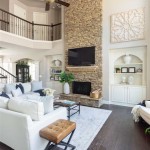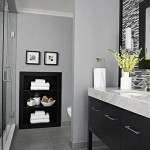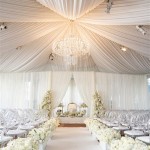Red Dining Room Decor Ideas: A Comprehensive Guide
The dining room, a space traditionally dedicated to nourishment and communal gatherings, offers a unique canvas for interior design expression. Among the myriad color palettes available, red stands out as a bold and impactful choice. Red, often associated with passion, energy, and warmth, can transform a dining room into a stimulating and inviting environment. However, its intensity necessitates careful consideration and strategic implementation to avoid overwhelming the space. This article explores various red dining room decor ideas, providing guidance on how to effectively incorporate this vibrant hue in a sophisticated and aesthetically pleasing manner.
The successful integration of red into a dining room's decor hinges on understanding its psychological effects and employing it judiciously. Red can stimulate appetite and encourage conversation, making it a potentially beneficial choice for a dining area. Nonetheless, excessive use of red can be perceived as aggressive or claustrophobic. Therefore, a balanced approach is essential. Consider the room's size, natural light, and existing architectural features when planning a red-themed dining room. The goal is to create a space that is both visually appealing and comfortable for extended periods.
Understanding Red's Various Shades and Their Application
Red is not a monolithic color; it encompasses a wide spectrum of shades, each possessing distinct characteristics and conveying different moods. Crimson, with its blue undertones, evokes a sense of sophistication and elegance. Burgundy, a darker, more muted shade of red, adds a touch of luxury and warmth. Scarlet, a bright, vibrant red, injects energy and excitement into a space. Choosing the right shade of red is crucial for achieving the desired ambiance in the dining room.
For instance, a formal dining room might benefit from the use of deep crimson or burgundy on the walls, complemented by elegant furniture and sophisticated lighting. In contrast, a more casual dining area could incorporate brighter shades of red, such as scarlet or cherry red, as accents in the decor. Consider the overall design scheme of the house and choose a red shade that complements the existing style.
The application of red can vary depending on the desired impact. Painting all four walls red will create a dramatic and immersive environment, but it is best suited for larger dining rooms with ample natural light. For smaller spaces, consider using red as an accent color on a single wall or opting for a lighter shade to prevent the room from feeling cramped. Alternatively, red can be introduced through furniture, textiles, and accessories.
When using red on the walls, it is important to consider the existing architectural features of the room. Red can highlight interesting details, such as crown molding or wainscoting, but it can also accentuate imperfections. Before painting, ensure that the walls are properly prepared and that any repairs are made. A smooth, even surface will ensure that the red paint looks its best.
Incorporating Red Through Furniture and Textiles
Furniture and textiles offer a versatile way to introduce red into the dining room without committing to a full-scale renovation. Red dining chairs can make a bold statement, especially when paired with a neutral-toned table. A red area rug can anchor the space and add warmth underfoot. Red curtains can frame the windows and provide privacy while adding a pop of color. The key is to choose pieces that complement the overall style of the room and avoid overwhelming the space with too much red.
When selecting red furniture, consider the material and finish. A red lacquered table can create a modern and sophisticated look, while red leather chairs can add a touch of luxury and comfort. A red upholstered bench can provide additional seating and storage. Mix and match different textures and materials to create visual interest and depth.
Textiles offer an even more flexible way to incorporate red into the dining room. Red tablecloths, placemats, and napkins can add a festive touch to the table setting. Red throw pillows on chairs or banquettes can provide additional comfort and style. Red artwork or tapestries can add visual interest to the walls. Experiment with different patterns and textures to create a unique and personalized look.
Mixing red textiles with neutral tones, such as white, beige, or gray, can create a balanced and harmonious look. A red and white striped tablecloth, for example, can add a touch of nautical charm to a coastal-themed dining room. A red and gray patterned rug can add a modern touch to a contemporary dining room. Use textiles to tie together the different elements of the room and create a cohesive design.
Balancing Red with Complementary Colors and Textures
Red, while a powerful color, benefits from being balanced with complementary colors and textures. White is a classic pairing that creates a crisp and clean look. Gray offers a more sophisticated and modern counterpoint. Gold accents can add a touch of luxury and elegance. Natural wood tones can bring warmth and earthiness to the space. The choice of complementary colors depends on the desired mood and the overall design aesthetic.
White walls and red furniture create a striking contrast that can brighten up a dining room. Gray walls and red accents can create a more subdued and sophisticated look. Gold chandeliers and red accents can add a touch of glamour. Natural wood furniture and red textiles can create a warm and inviting atmosphere.
In addition to color, texture plays a crucial role in creating a well-balanced dining room. Smooth, glossy surfaces, such as lacquered furniture or polished floors, can reflect light and create a sense of spaciousness. Rough, textured surfaces, such as exposed brick or woven rugs, can add depth and character. Mixing different textures can create visual interest and prevent the room from feeling flat.
Consider incorporating natural elements into the red dining room decor. Plants can add a touch of life and freshness, while natural light can soften the intensity of the red. Use natural materials, such as wood, stone, or bamboo, to create a sense of harmony and balance. These elements can help to create a dining room that is both visually stunning and comfortable to use.
Lighting is also a critical factor when decorating with red. Red absorbs light, so it is important to ensure that the dining room is well-lit, both with natural and artificial light. Consider using multiple light sources, such as overhead lighting, wall sconces, and table lamps, to create layers of light. Dimmable lights can allow for adjusting the brightness according to the mood and occasion.
Ultimately, the successful implementation of red in a dining room's decor depends on careful planning and execution. By understanding the various shades of red, incorporating it strategically through furniture and textiles, and balancing it with complementary colors and textures, it is possible to create a dining room that is both visually striking and inviting. The integration of lighting and natural elements will enhance the overall ambiance, creating a space where meals are enjoyed and memories are made.

Stunning Red Dining Room Ideas For Your Home Design Cafe

50 Red Dining Room Ideas Photos Colors Wall Color Living Combo

34 Rooms In Ravishing Red Dining Room Luxury Furniture Design

How To Create A Sensational Dining Room With Red Panache Decoist

Stunning Red Dining Room Ideas For Your Home Design Cafe

53 Bold Red Accent Walls To Beautify Your Home Dining Room Living Small

Bold Red Dining Room Ideas You Might Want To Steal Now Decortrendy Com Colors Small

11 Red Decorating Ideas For Every Room Town Country Living

How To Create A Sensational Dining Room With Red Panache Decoist

50 Red Dining Room Ideas Photos
Related Posts







